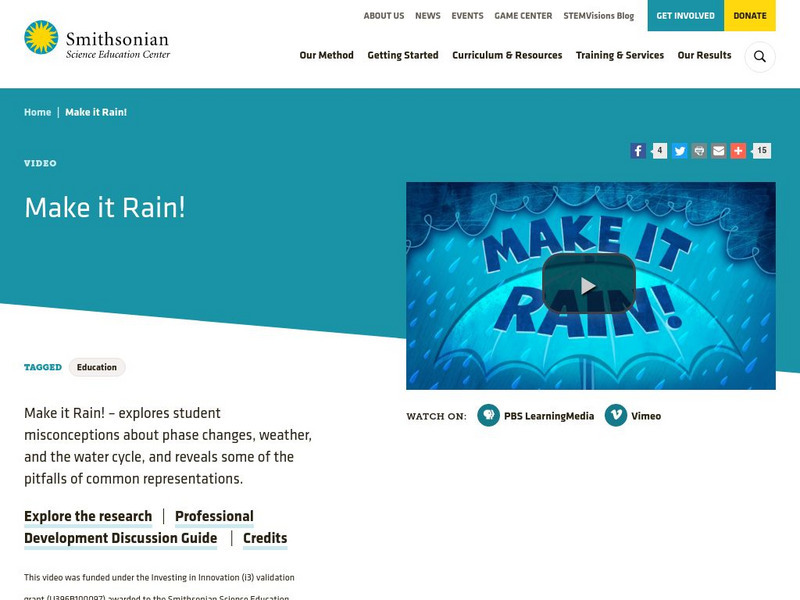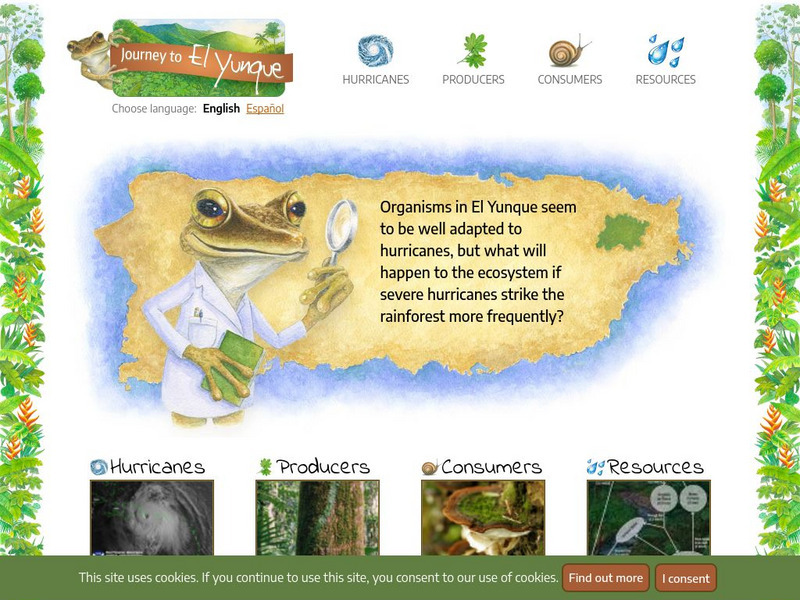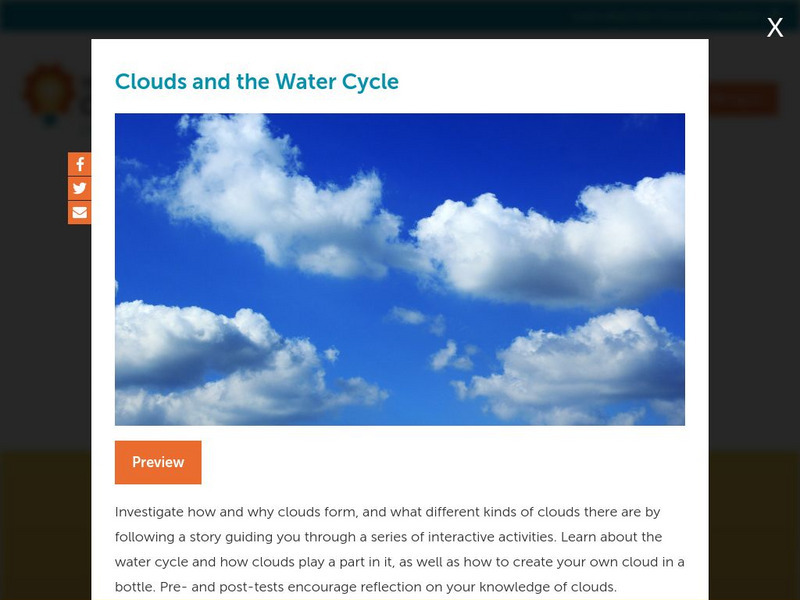Science Buddies
Science Buddies: Make a Water Cycle Model
In this lesson plan, students will explore how water is continually cycled among land, the oceans, and the atmosphere.
BioEd Online
Bio Ed Online: What Is the Water Cycle?
In this lesson students will create and investigate a simple model of the water cycle. Student sheets are provided in English and in Spanish.
BioEd Online
Bio Ed Online: Making a Water Cycle
In this lesson students are required to observe a simple model of the water cycle constructed of sand and ice in a plastic shoe box.
Alabama Learning Exchange
Alex: Water Cycle Model
This hands-on model of the water cycle is a great culminating activity for a study of the movement of water through the environment. Completed in small groups or as a class project, it involves connecting three bottles to demonstrate the...
Utah Education Network
Uen: Miniature Water Cycles
Fourth graders will construct a model of the water cycle in action.
University Corporation for Atmospheric Research
Ucar: The Water Cycle
This site provides a comprehensive introduction to the water cycle. Young scholars construct a model to simulate parts of the water cycle. Includes background information, links to standards, lesson plans, and assessment ideas.
Museum of Science
Oceans Alive: The Water Planet
Check out this simple overview of the water cycle and learn how to build a model of the water cycle.
TeachEngineering
Teach Engineering: Water Desalination Plant
Students use a thermal process approach to design, build and test a small-scale desalination plant that is capable of significantly removing the salt content from a saltwater solution. Students use a saltwater circuit to test the...
TeachEngineering
Teach Engineering: Floodplain Modeling
Students explore the impact of changing river volumes and different floodplain terrain in experimental trials with table top-sized riverbed models. The models are made using modeling clay in aluminum baking pans placed on a slight...
TeachEngineering
Teach Engineering: Moving Without Wheels
In a class demonstration, students observe a simple water cycle model to better understand its role in pollutant transport. This activity shows one way in which pollution is affected by the water cycle; it simulates a point source of...
American Geosciences Institute
American Geosciences Institute: Earth Science Week: Earth's Hydrologic Cycle
In this experiment, learners create a model of the water cycle and learn about its crucial role in moving water around the Earth.
US Environmental Protection Agency
Epa: Thirstin's Water Cycle Activity [Pdf]
This resource presents a simple set of instructions for building a model of the water cycle in a lidded jar.
University Corporation for Atmospheric Research
Ucar: Just a Phase: Water as a Solid, Liquid, and Gas
This site helps students construct a model of the arrangement of water molecules when present as solid, liquid or gas. Includes background information, lesson plans, links to standards and assessment ideas.
Other
Water on the Web
Water on the Web (WOW) is an advanced site allowing students to actively participate in data analysis from real research sites. Lesson plans on a range of topics are provided. There is also a tutorial for using Excel to graph WOW data.
Smithsonian Institution
Smithsonian Science Education Center: Make It Rain
How do you show students that the water cycle is more than just the traditional model of the ocean, clouds, and mountains and actually a part of their daily lives? This video will show multiple models of different part of the water cycle...
University Corporation for Atmospheric Research
Ucar: Modeling Tree Transpiration
In this activity, young scholars will observe and measure the water given off through transpiration by a plant in a small terrarium.
Utah Education Network
Uen: All Washed Up
Fourth graders create a model that effectively filters water as it passes through the groundwater system.
TeachEngineering
Teach Engineering: On the Move
Looking at models and maps, students explore different pathways and consequences of pollutant transport via the weather and water cycles. In an associated literacy activity, students develop skills of observation, recording and reporting...
OpenSciEd
Open Sci Ed: Net Logo: Chloroplasts and Food Model
The simulation shows the relationship between the inputs and outputs in the chloroplasts of plant, that can help explain how they convert water and carbon dioxide to glucose and water with the help of energy absorbed from light.
Other
The Learning Partnership: Journey to El Yunque
In this set of learning modules, students examine the impact of hurricane weather on the El Yunque rainforest in Puerto Rico. They learn about hurricanes, producers, consumers, and the food chain, and how disruptions in organisms'...
American Chemical Society
Middle School Chemistry: Changing State: Evaporation
Students build a model of a water molecule and design an experiment to see if adding energy affects the rate of evaporation.
TeachEngineering
Teach Engineering: Dams
Through eight lessons, students are introduced to many facets of dams, including their basic components, the common types (all designed to resist strong forces), their primary benefits (electricity generation, water supply, flood...
Concord Consortium
Concord Consortium: Stem Resources: Beginning Clouds Unit
Explore how clouds are formed with the computer-based model in these interactive activities. Also learn about clouds part in the water cycle. Activity includes pre- and post-tests which can be saved and graded by the teacher.
Science Education Resource Center at Carleton College
Serc: Mn Step: Watersheds Urban and Rural
In this activity students build models of two types of watersheds, one urban and one rural. They will then simulate rain or the water cycle and observe what happens to the 'soil.' This activity leads to discussions about the water cycle,...







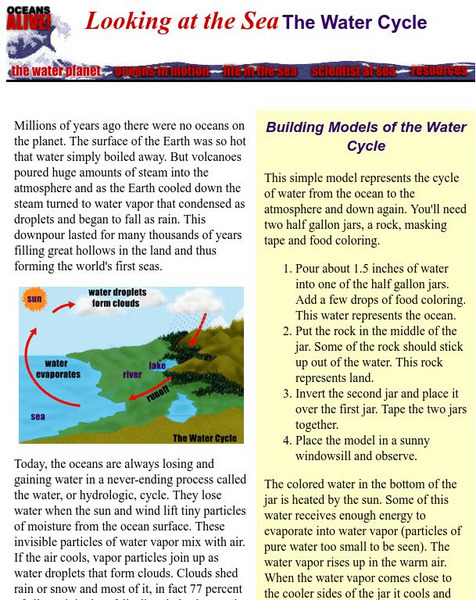


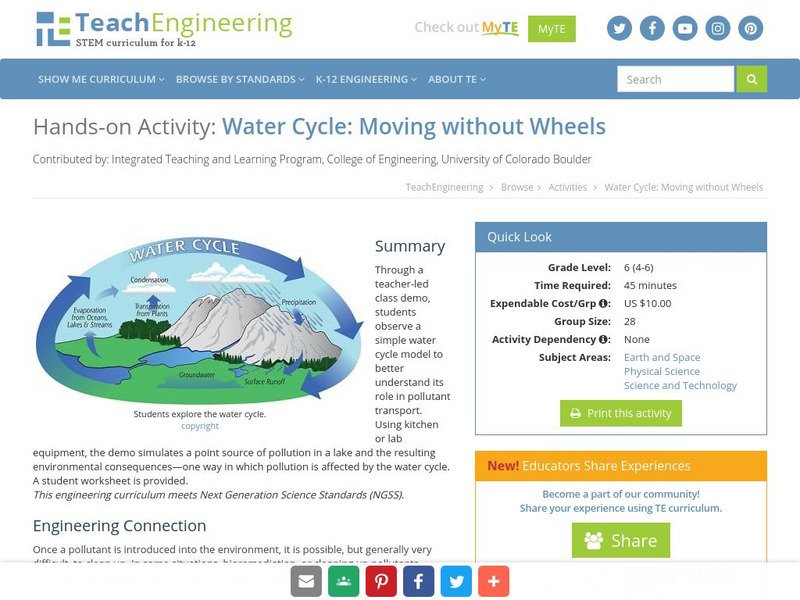

![Epa: Thirstin's Water Cycle Activity [Pdf] Activity Epa: Thirstin's Water Cycle Activity [Pdf] Activity](https://content.lessonplanet.com/knovation/original/42177-3463950814dbad483d30b2fc4d3e1b32.jpg?1661270397)


